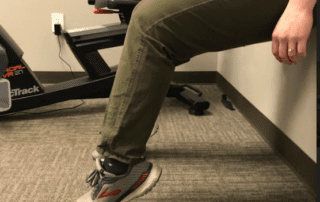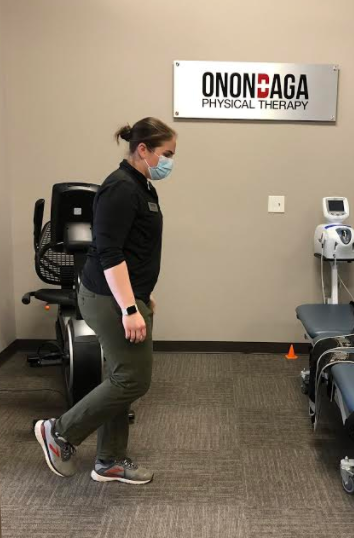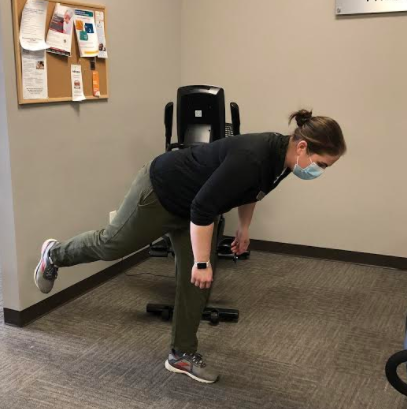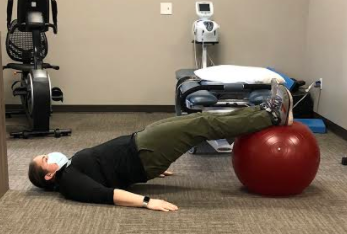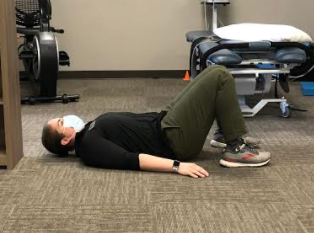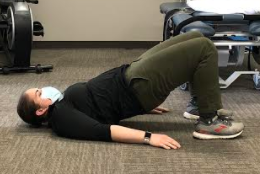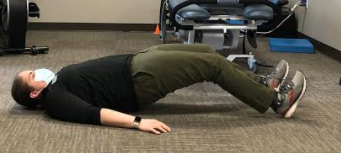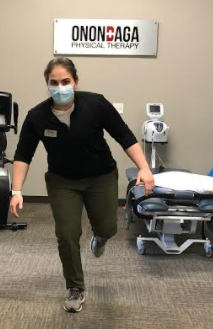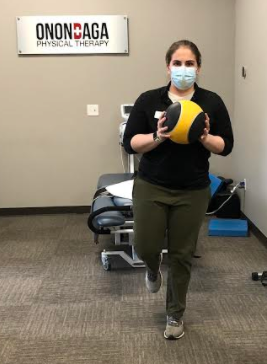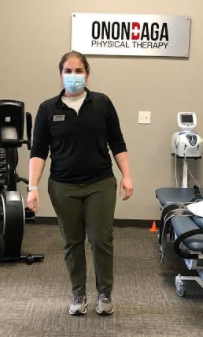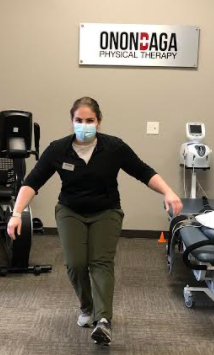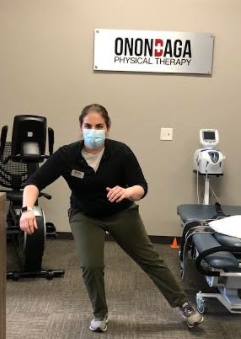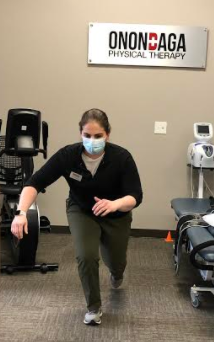
Downhill skiing is a great form of exercise that challenges your legs, core, balance, and cardiovascular endurance. Being on the mountain is also a great way to enjoy the winter months and stay active. For most of us, the start of ski season arrives and we have not prepared our body for the intensity of exercise that comes from a full day of skiing. To help with muscle soreness and decrease the chance of injury, preparing your body for the specific demands of skiing prior to the season can help.
When your legs are fatigued, you are more at risk for injuries. Preparing by working on your core and hip strength can improve your balance and decrease your risk of lower extremity injuries.
Try these exercises to prepare for ski season. If these exercises cause pain, you can modify them to decrease the challenge or reach out to your physical therapist to discuss the issues that you are having. Remember that to see the full benefits of an exercise program you need to start early. Try incorporating these five exercises into your normal workout routine before you hit the slopes.
Wall Sit with Calf Raise
This exercise combines a static wall sit with a bent leg calf raise. To increase the challenge you can hold onto a medicine ball or weight plate with your arms extended.
- Start with your back against the wall and your feet a comfortable distance away.
- Next, Sink down into a squat until your thighs are parallel to the ground.
- Rise onto your toes and then return to the starting position
- You can perform this exercise for repetitions or for a set goal amount of time depending on your current fitness level.
Single-Leg RDL with Hip Rotation to Reverse Lunge
This exercise helps with balance, as well as lower extremity strength.
- Start by balancing on one leg. You can have a chair next to you for balance if needed.
- Keeping the stance leg slightly bent at the knee, hinge at the hips and reach the opposite leg behind you (slightly off the ground).
- In this position, try to rotate (roll) your hips away from the stance foot while staying balanced and controlled.
- Keep your trunk straight as you roll your hips back and return to standing.
- When you return to standing, transition immediately into a reverse lunge.
- Repeat 10-15 times on each side for 2-3 sets.
Glute Ball Bridge with Hamstring Curl
This exercise helps to engage the glutes and hamstrings.
No exercise ball? You can perform a bridge walk-out as an alternate option.
- Begin on your back with your feet elevated on a ball and your legs straight
- Engage your core and lift your hips off of the ground
- Keeping the hips high, bend your knees curling the ball towards you
- Next, straighten your legs and then slowly lower your hips to the surface.
- Repeat this motion for 10-15 repetitions, 3 sets.
Bridge Walk-Out (No Ball Necessary)
This exercise does not require a ball, it is an alternate option to the Glute Ball Bridge with Hamstring Curl to the left.
- Start on your back with your knees bent
- Engage your core and lift your hips off of the ground
- Keeping the hips high, slowly walk your feet away from you and back in.
- Lower your hips to the surface
- Repeat this motion for 10-15 repetitions, 3 sets.
Lateral Ski Jumps
This exercise helps with balance and preparing your legs for the control needed as you turn. To increase the challenge, you can hold onto a med ball or weight plate and perform a twist after you control the landing.
- Start by standing on one leg with your leg slightly bent
- Jump sideways landing on the opposite leg with a soft landing and good control. Make sure that your knee stays in good alignment (do not let the knee fall in).
- Then jump to the other side, landing on the other leg.
- Repeat this motion for 30 repetitions (15 on each leg) or complete for time
- To increase the challenge- hold onto a med ball and after landing, perform a trunk twist and reach over your stance leg. Return to center before jumping to the opposite side.
Clock Lunge
To increase the challenge for this exercise, you can try standing on an unstable surface such as an Airex mat or even a pillow.
- Start by balancing on one leg pretending that you are at the center of a clock.
- Reach your opposite leg forward to the 12 o’clock position and bend the stance leg. Return to starting position
- Repeat this movement at 3 o’clock, 6 o’clock, and 9 o’clock.
- Perform 8-10 repetitions for 2-3 sets on each leg.




